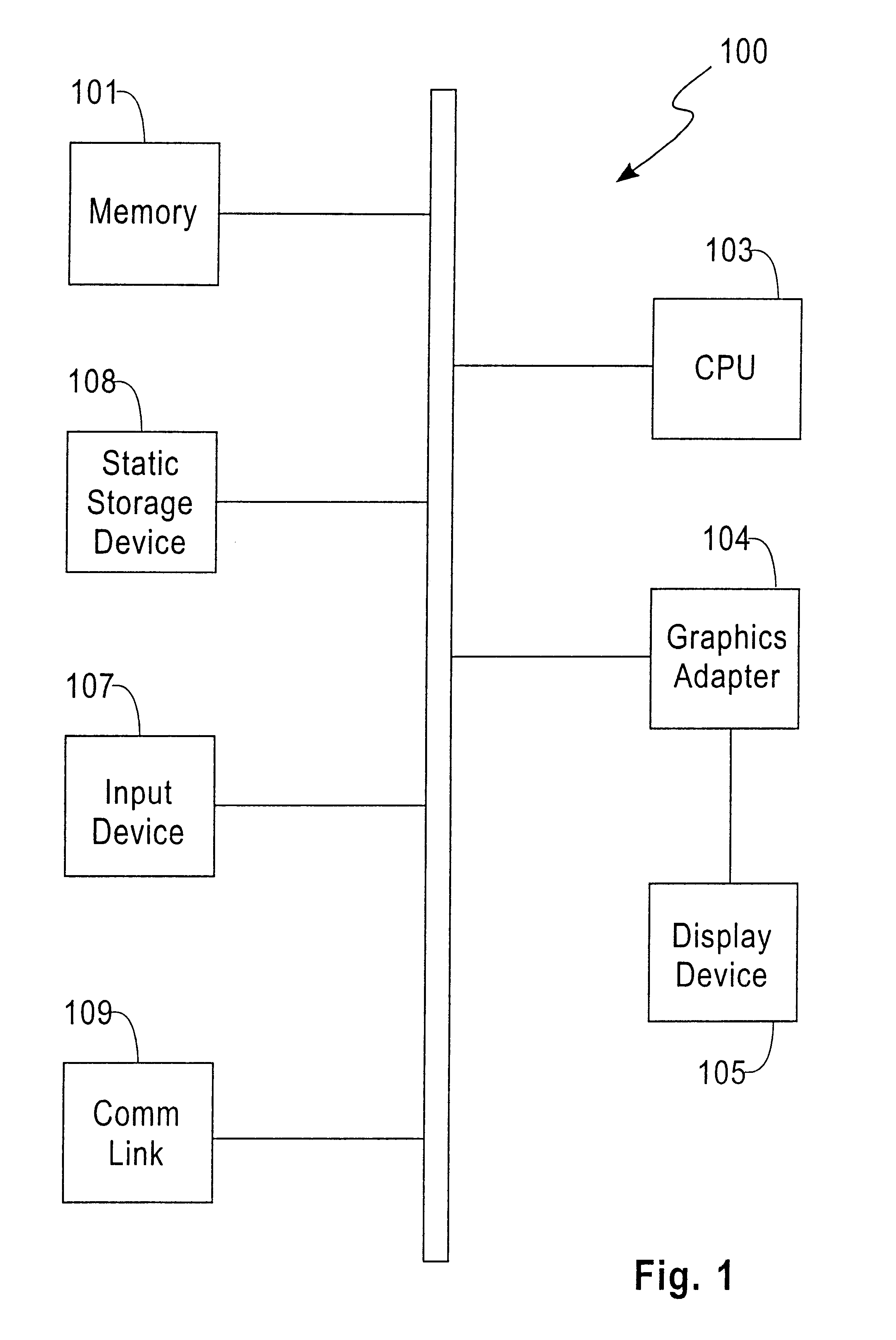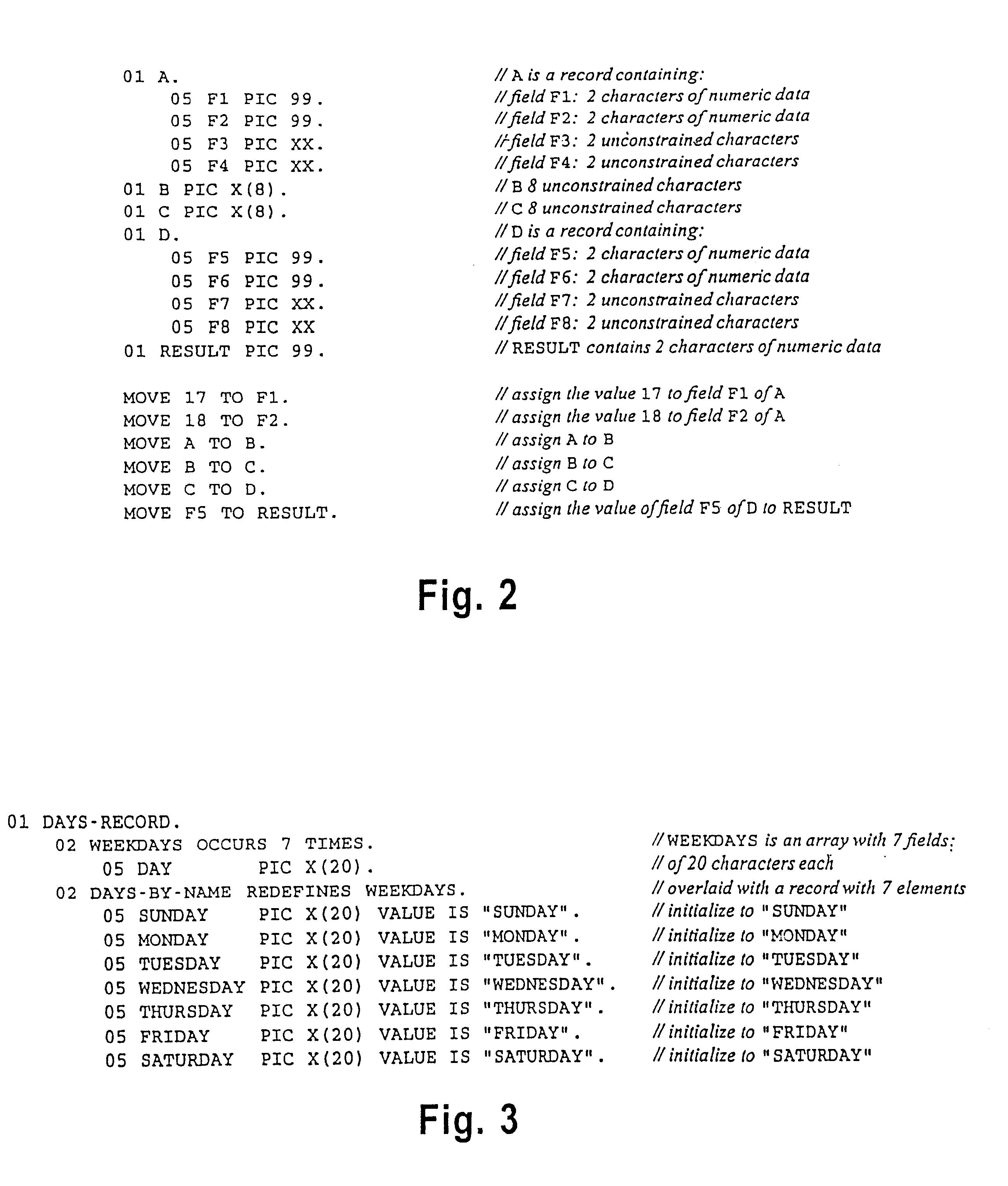Aggregate structure identification and its application to program analysis
a technology of structure identification and program analysis, applied in the field of computer program analysis, can solve the problems of inability to accurately identify the structure of the program, and inability to achieve the exactness of the program,
- Summary
- Abstract
- Description
- Claims
- Application Information
AI Technical Summary
Problems solved by technology
Method used
Image
Examples
Embodiment Construction
The present invention may be implemented on any computer processing system including, for example, a personal computer or a workstation. As shown in FIG. 1, a computer processing system 100 as may be utilized by the present invention generally comprises memory 101, at least one central processing unit (CPU) 103 (one shown), and at least one user input device 107 (such as a keyboard, mouse, joystick, voice recognition system, or handwriting recognition system). In addition, the computer processing system includes a nonvolatile memory, such as (ROM), and / or other nonvolatile storage devices 108, such as a fixed disk drive, that stores an operating system and one or more application programs that are loaded into the memory 101 and executed by the CPU 103. In the execution of the operating system and application program(s), the CPU may use data stored in the nonvolatile storage device 108 and / or memory 101. In addition, the computer processing system includes a graphics adapter 104 coup...
PUM
 Login to View More
Login to View More Abstract
Description
Claims
Application Information
 Login to View More
Login to View More - R&D
- Intellectual Property
- Life Sciences
- Materials
- Tech Scout
- Unparalleled Data Quality
- Higher Quality Content
- 60% Fewer Hallucinations
Browse by: Latest US Patents, China's latest patents, Technical Efficacy Thesaurus, Application Domain, Technology Topic, Popular Technical Reports.
© 2025 PatSnap. All rights reserved.Legal|Privacy policy|Modern Slavery Act Transparency Statement|Sitemap|About US| Contact US: help@patsnap.com



